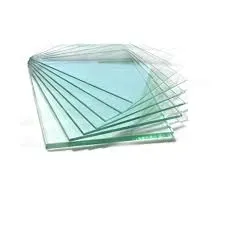Exploring Clear Glass Types A Comprehensive Overview
Clear glass is a versatile material widely used in various industries, from construction and architecture to packaging and decoration. Its transparency and aesthetic appeal make it a popular choice for homeowners and designers alike. However, not all clear glass is created equal; different types possess unique properties and applications that cater to specific needs. This article will explore the various types of clear glass, their characteristics, and their uses.
1. Annealed Glass
Annealed glass is the most basic form of clear glass. It is produced by slowly cooling the glass after it has been formed, a process that reduces internal stresses. This type of glass is easy to cut and shape, making it ideal for windows, picture frames, and other applications where safety and durability are not primary concerns. However, it is more prone to breakage compared to other types, so caution is advised in environments with high impact or thermal stress.
2. Tempered Glass
Tempered glass, also known as toughened glass, is manufactured through a process of extreme heating and rapid cooling. This treatment increases its strength, making it five to six times stronger than standard annealed glass. Additionally, tempered glass is designed to shatter into small, blunt pieces rather than sharp shards, enhancing safety. Due to these properties, it is commonly used in shower doors, glass doors, and façades, as well as in places where safety is paramount.
3. Laminated Glass
clear glass types
Laminated glass consists of two or more layers of glass separated by an interlayer, typically made of polyvinyl butyral (PVB). This type of glass is highly effective in sound insulation and UV protection. Additionally, if it breaks, the interlayer holds the shards together, minimizing the risk of injury. Laminated glass is often used in skylights, glass floors, and automobile windshields, offering both safety and aesthetic benefits.
4. Low-E Glass
Low-emissivity (Low-E) glass is a specialized type of clear glass that has a thin, invisible coating to reflect infrared light while allowing visible light to pass through. This technology enhances energy efficiency by keeping heat inside during the winter and blocking excess heat during the summer. Low-E glass is widely used in energy-efficient windows and buildings, contributing to lower energy costs and a reduced carbon footprint.
5. Clear View Glass
Clear view glass refers to a high-quality type that offers exceptional clarity and minimal distortion. It is often used in applications requiring a crystal-clear view, such as display cases, aquariums, and high-end architecture. The production process ensures a smooth finish, allowing for maximum transparency, making it an ideal choice for modern design.
Conclusion
Understanding the different types of clear glass is crucial for making informed decisions in construction, design, and everyday applications. From the basic annealed glass to the specialized Low-E and laminated varieties, each type offers unique benefits tailored to various environments. The right choice can significantly enhance safety, energy efficiency, and aesthetic appeal in any project. As technology advances, the glass industry continues to innovate, promising even more versatile solutions for the future.
 Afrikaans
Afrikaans  Albanian
Albanian  Amharic
Amharic  Arabic
Arabic  Armenian
Armenian  Azerbaijani
Azerbaijani  Basque
Basque  Belarusian
Belarusian  Bengali
Bengali  Bosnian
Bosnian  Bulgarian
Bulgarian  Catalan
Catalan  Cebuano
Cebuano  Corsican
Corsican  Croatian
Croatian  Czech
Czech  Danish
Danish  Dutch
Dutch  English
English  Esperanto
Esperanto  Estonian
Estonian  Finnish
Finnish  French
French  Frisian
Frisian  Galician
Galician  Georgian
Georgian  German
German  Greek
Greek  Gujarati
Gujarati  Haitian Creole
Haitian Creole  hausa
hausa  hawaiian
hawaiian  Hebrew
Hebrew  Hindi
Hindi  Miao
Miao  Hungarian
Hungarian  Icelandic
Icelandic  igbo
igbo  Indonesian
Indonesian  irish
irish  Italian
Italian  Japanese
Japanese  Javanese
Javanese  Kannada
Kannada  kazakh
kazakh  Khmer
Khmer  Rwandese
Rwandese  Korean
Korean  Kurdish
Kurdish  Kyrgyz
Kyrgyz  Lao
Lao  Latin
Latin  Latvian
Latvian  Lithuanian
Lithuanian  Luxembourgish
Luxembourgish  Macedonian
Macedonian  Malgashi
Malgashi  Malay
Malay  Malayalam
Malayalam  Maltese
Maltese  Maori
Maori  Marathi
Marathi  Mongolian
Mongolian  Myanmar
Myanmar  Nepali
Nepali  Norwegian
Norwegian  Norwegian
Norwegian  Occitan
Occitan  Pashto
Pashto  Persian
Persian  Polish
Polish  Portuguese
Portuguese  Punjabi
Punjabi  Romanian
Romanian  Russian
Russian  Samoan
Samoan  Scottish Gaelic
Scottish Gaelic  Serbian
Serbian  Sesotho
Sesotho  Shona
Shona  Sindhi
Sindhi  Sinhala
Sinhala  Slovak
Slovak  Slovenian
Slovenian  Somali
Somali  Spanish
Spanish  Sundanese
Sundanese  Swahili
Swahili  Swedish
Swedish  Tagalog
Tagalog  Tajik
Tajik  Tamil
Tamil  Tatar
Tatar  Telugu
Telugu  Thai
Thai  Turkish
Turkish  Turkmen
Turkmen  Ukrainian
Ukrainian  Urdu
Urdu  Uighur
Uighur  Uzbek
Uzbek  Vietnamese
Vietnamese  Welsh
Welsh  Bantu
Bantu  Yiddish
Yiddish  Yoruba
Yoruba  Zulu
Zulu 

